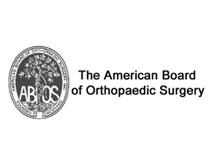Healthcare News
FEAR index in predicting treatment among patients with femoroacetabular impingement and hip dysplasia and the relationship of femoral version
The Femoro-Epiphyseal Acetabular Roof (FEAR) index is a newer measurement to identify the hip instability with borderline acetabular dysplasia.
Exercising With Knee Pain : Do`s and Don`ts
Plenty of studies show the enormous benefits of regular exercise on knee health and the protective advantages it can offer in keeping the structures, tissues and ligaments of the knee protected from damage now, and later in life. As long as you clear it with your physician first, you might be surprised at the knee pain relief and active lifestyle benefits that can come with introducing exercise into your daily routine.
Steroid injections may provide longer lasting benefits for hip pain than current best care
Steroid injections appear to lead to significantly greater pain relief and movement for up to four months than current best care in adults with hip osteoarthritis, finds a trial published by the BMJ today.
How long should a concussed athlete be sidelined?
What factors predict recovery time for an athlete who has suffered a concussion? A new study has some answers. As the Stanford University authors wrote, “Prognosticating recovery times for individual athletes with a concussion remains a challenge for health care providers. Several preinjury and postinjury factors have been proposed to be predictive of prolonged return-to-play times, but the data in this area are still sparse.”
How does rheumatoid arthritis affect the knees?
Rheumatoid arthritis (RA) is an autoimmune condition, meaning the immune system mistakenly attacks healthy tissues. RA in the knees may severely affect a person’s mobility.










